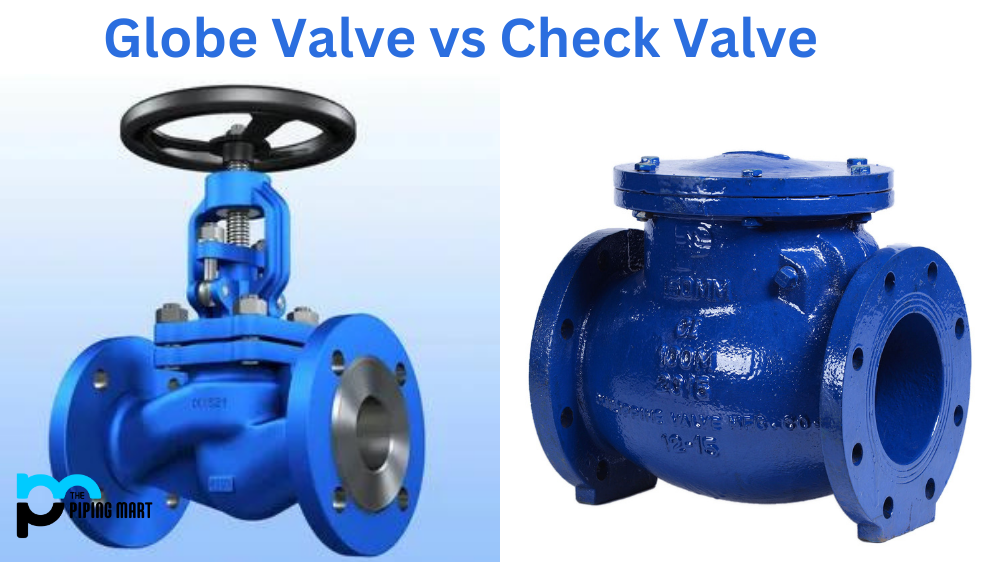Valve technology has made great strides in modern engineering. Valves are used in almost every industry, from oil and gas to food and beverage. Engineers worldwide continually research new valve designs and find ways to make them more effective and efficient. Two of the most commonly used valves are globe valves and check valves. However, many people are still confused about the differences between them. This blog post aims to provide a comprehensive guide to globe valves vs check valves.
Globe Valve
Globe valves are often used for regulating fluid flow in pipelines. They are a linear motion valve that controls flow using a movable plug that entirely or partially covers the seat opening. The pin is attached to a stem that moves up and down inside the valve’s body. A pneumatic or electric actuator can operate this item manually or automatically. The flow rate can be adjusted by changing the position of the plug relative to the seat opening. Globe valves come in various sizes and materials depending on the application, and they are commonly used in industrial applications, such as chemical plants, pharmaceuticals, and petrochemical industries.
Check Valve
Check valves are designed to allow fluid to flow in one direction. They are typically used in applications where backflow must be prevented. Check valves can have different designs, such as ball, swing, or lift check valves. However, they generally work using a spring-loaded mechanism that opens or closes the valve depending on the direction of the fluid flow. If the fluid flow reverses direction, the valve closes, preventing backflow. Check valves are widely used in many industries, such as water treatment.
Differences Between Globe Valve and Check Valve
The main difference between globe and check valves is their design and intended purpose. Globe valves are intended for regulating flow, while check valves are designed to prevent backflow. Globe valves are a type of linear valve, while check valves are non-linear. Globe valves have a soft-close feature, whereas check valves feature a hard-close mechanism. Globe valves can be completely shut off, whereas check valves can’t completely shut off the flow of the fluid.
Applications for Globe Valve and Check Valve
Globe valves are typically used in larger pipelines, where precise flow regulation is required. However, they are also used in smaller distributing pipelines where constant flow changes are necessary. On the other hand, check valves are typically used in smaller channels, such as those found in the water treatment industry.
Other Differences
- Globe valves are used to regulate the flow of fluids in a pipeline, while check valves are used to prevent backflow in a channel.
- Globe valves have a round body with a plug that can be opened or closed to control fluid flow, while check valves have a flap that opens and closes to allow or prevent fluid flow.
- Globe valves are more expensive than check valves.
- Check valves are less likely to fail than globe valves.
- Globe valves can be installed in any orientation, while check valves must be installed vertically.
- Globe valves are not self-cleaning, while check valves are self-cleaning.
- Globe valves require regular maintenance, while check valves do not.
- Globe valves are available in a variety of materials, including brass, bronze, cast iron, and stainless steel, while check valves are typically made from plastic or metal
Conclusion
Choosing the correct valve for your application is crucial for ensuring safety, reliability, and optimal performance. Globe and check valves are essential components in the valve industry, performing different functions. Globe valves are for regulating fluid flow, and check valves are for preventing backflow. Choosing the correct valve and size that best suits your application and the material with which the valve is made is essential. Ultimately the choice of the valve will depend on the project’s specifications, and your requirements will differ depending on your industry, pipeline size, and construction. Consult with an expert in the engineering field to find the best valve for your application.

Abhishek is a seasoned blogger and industry expert, sharing his insights and knowledge on various topics. With his research, Abhishek offers valuable insights and tips for professionals and enthusiasts. Follow him for expert advice on the latest trends and developments in the metal industry.




